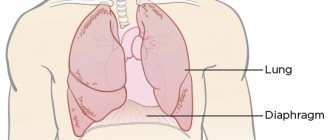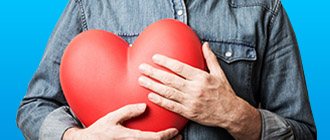Cardiac glycosides are a group of herbal drugs that are used to treat heart failure.
The main function of the myocardium - the heart muscle - is contractility, thanks to which the heart, working like a pump, delivers a sufficient volume of blood to the tissues and cells of the body for their normal functioning.
Heart failure is a disease manifested by a significant decrease in the pumping function of the myocardium, in which the heart actually cannot cope with the loads placed on it. In this case, there is a decrease in the supply of fresh arterial blood rich in oxygen to peripheral organs and tissues, as well as a delay in the return of venous blood that has released oxygen to the heart.
Stagnation of blood in the veins leads to the development of edema - most often the legs swell in the ankles and feet. In addition, stagnation of venous blood in the lungs leads to the accumulation of fluid and increased pressure in the lungs, which is accompanied by shortness of breath and coughing (especially when lying down).
As the severity of heart failure increases, the skin acquires a bluish color (cyanosis), which is especially pronounced in the area of the lips, ears, tip of the nose, and fingers.
Heart failure significantly limits a person's life activity. The slightest physical exertion can lead to weakness, shortness of breath, heart pain or palpitations. Sometimes a patient with heart failure cannot climb several steps without taking a moment's rest.
To treat heart failure, cardiac glycosides are used - special preparations that are obtained from certain plants: digitalis (digitalis), lily of the valley, strophanthus, adonis. Cardiac glycosides increase the strength of heart contractions and alleviate all symptoms of heart failure.
Definition of digitalis intoxication
· Poisoning with cardiac glycosides (digitalis intoxication) is an overdose of drugs from the foxglove plant, for example, digoxin.
· Cardiac glycosides were originally developed from the leaves of various plants (digitalis, lily of the valley) and have been in clinical use for centuries.
· This class of medications is used primarily in the treatment of heart failure and supraventricular arrhythmias.
· Digitalis poisoning is a potentially life-threatening condition.
· Characteristic symptoms appear when the dose of the drug is 1.5–2 times higher than the norm, and if its amount is 5–10 times higher than the permissible daily dose, there is a high probability of death.
· Cardiac glycosides bind to plasma proteins and have a cumulative effect, so digitalis intoxication is not only acute (with a single dose of an excessive dose of the drug), but also chronic (non-critical, but repeated use of a dose of the drug exceeding the daily norm).
Indications for use
Cardiac glycosides are indicated for acute and chronic heart failure.
In addition, certain cardiac glycosides (for example, digoxin) are used for a special form of heart rhythm disorder - atrial fibrillation. Flickering (fluttering) is a phenomenon in which certain parts of the heart (atria or ventricles) contract quickly and randomly or, figuratively speaking, “flutter” like the wings of a butterfly. The heart rate can reach 150-300 per minute with a normal rate of 60-90 heart beats.
Etiology and pathogenesis
At the moment, cardiac glycoside poisoning is less common in medical practice than before, as fewer patients receive digoxin.
General effects:
· Digitalis paralyzes Na + -K + AT and has a strong vagotonic effect.
· Poisoning can be due to intentional acute or accidental chronic overdose.
· The toxic effects of digitalis are enhanced by electrolyte disturbances, especially hypokalemia, as well as cardiovascular and pulmonary disturbances.
· The plasma half-life of digoxin is approximately 36 hours but may be prolonged in renal failure due to delayed urinary excretion.
pharmachologic effect
Cardiac glycoside preparations increase the force of heart contractions, helping to increase the amount of calcium ions in the heart muscle cells. Calcium is critically necessary for any muscle cells (including the myocardium) for full contractile activity.
In addition, cardiac glycosides reduce the frequency (number) of heart contractions, thereby giving the heart the opportunity to rest longer and restore its strength as much as possible in the interval between contractions.
Cardiac glycosides reduce impulse conduction in the conduction system of the heart and normalize pathological heart rhythm.
Additionally, cardiac glycoside preparations, improving blood flow in the kidneys, have a diuretic (diuretic) effect.
Diagnosis of digitalis intoxication
Diagnostic criteria
Clinical suspicion is confirmed by evidence of:
Increased levels of serum digoxin;
· heart failure;
· diseases of the gastrointestinal tract;
· neurological diseases.
The condition can occur due to intentional (acute) or accidental (chronic) overdose.
Acute overdose is characterized by the following symptoms:
- The patient develops nausea, vomiting, and diarrhea.
- Severe abdominal pain occurs.
- Bradycardia.
- Hyperkalemia.
- Atrioventricular block.
Chronic overdose:
- Gradual development of hypokalemia and hypomagnesemia due to concomitant diuretic therapy.
- Development of ventricular arrhythmias - stroke, ventricular tachycardia, ventricular fibrillation.
- Decreased appetite, nausea, vomiting, diarrhea, sometimes severe abdominal pain.
- Neurological symptoms such as lethargy, headache, confusion, hallucinations, color vision disturbances (yellow-green vision).
- Nightmares, psychotic reactions.
- Impaired consciousness, confused speech, drowsiness, loss of strength, convulsions.
Chapter 18. Cardiotonic drugs
Pharmacology. Textbook - ed. Alyautdina R.N.
Cardiotonic drugs increase myocardial contractility (the strength of heart contractions); used for heart failure.
Heart failure is characterized by a violation of the contractile function of the myocardium and a decrease in cardiac output, which leads to a deterioration in the blood supply to organs and tissues. In heart failure, the heart is unable to pump blood in sufficient quantities to meet the oxygen needs of tissues, as a result, the conditions for their normal functioning are disrupted.
The development of heart failure is caused by:
- diseases that primarily affect the myocardium (myocarditis, intoxication, anemia, etc.);
- secondary myocardial overload with increased pressure or blood volume (hypertension, valvular heart disease, etc.).
According to the speed of development of the disease, acute and chronic heart failure are distinguished. Acute heart failure is a severe circulatory disorder that can be complicated by pulmonary edema and develops quickly (sometimes within a few minutes). This requires prompt medical intervention. Chronic heart failure develops slowly (months, years), and at times manifestations of acute heart failure are possible.
Depending on the location, failure of the left or right parts of the heart (atria, ventricles) is distinguished.
With left ventricular heart failure, the heart is unable to pump all the blood from the venous system to the arterial system, venous pressure increases, blood stagnation occurs in the systemic and pulmonary circulation, cardiac output decreases and blood flow in organs and tissues worsens. A decrease in renal blood flow stimulates the release of renin and, as a result, the formation of angiotensin II and aldosterone, which causes sodium and water retention in the body. As a result, swelling of the subcutaneous tissue and internal organs develops. Insufficient blood supply to tissues leads to their hypoxia, manifested by shortness of breath, cyanosis of the skin and mucous membranes and the gradual development of organ dystrophy. Due to increased venous pressure and decreased cardiac output, reflex tachycardia occurs.
Cardiotonic drugs, by increasing the force of myocardial contractions, increase cardiac output and improve blood supply to organs and tissues, normalize renal blood flow and reduce fluid retention in the body, reduce venous pressure, and eliminate blood stagnation in the venous system. As a result, swelling and shortness of breath disappear, and the function of internal organs is restored. Cardiotonic drugs, which are currently used in clinical practice, increase myocardial contractility due to an increase in the concentration of ionized calcium (Ca2+) in the cytoplasm of cardiomyocytes. Ca2+ ions bind to troponin C of the troponin-tropomyosin complex of cardiomyocytes and, by changing the conformation of this complex, eliminate its inhibitory
influence on the interaction between actin and myosin. As a result, a greater number of actin-myosin complexes are formed, which leads to increased muscle contraction.
Cardiotonic drugs are divided into:
- cardiac glycosides;
- cardiotonic drugs of non-glycoside structure.
18.1. CARDIAC GLYCOSIDES
Digitoxin, digoxin (Lanoxin, Lanikor, Dilanacin), lanatoside C (Celanide, Isolanide), ouabain (Strophanthin K), corglycon.
Cardiac glycosides refer to compounds with a steroid structure isolated from plant materials. Digitalis infusions containing cardiac glycosides have long been used in folk medicine to eliminate edema and feelings of cardiac dysfunction. In clinical medicine, these drugs were first successfully used at the end of the 18th century by W. Withering in patients with heart failure. The discovery of the cardiotonic and diuretic properties of digitalis preparations is still considered one of the most important in medicine.
Cardiac glycosides are obtained from herbal medicinal raw materials, in particular, from various types of foxglove (purple, rusty and woolly), from strophanthus (smooth, Combe), lily of the valley, sea onion, etc.
Cardiac glycosides consist of a non-sugar part (aglycone or genin) and sugars (glycone). The aglycone has a steroid structure (cyclopentanper-hydrophenanthrene) and in most glycosides is associated with an unsaturated lactane ring. The structure of the aglycone determines the pharmacodynamic properties of cardiac glycosides, including their main effect – cardiotonic. Solubility in water, lipids and, as a consequence, the ability to be absorbed in the intestine, bioavailability, ability to cumulate, and excretion are determined by the sugar part, which also affects the activity and toxicity of cardiac glycosides.
Cardiac glycosides, acting on the myocardium, cause the following main effects.
Positive inotropic effect (from the Greek inos - fiber, muscle; tropos - direction) - an increase in the force of heart contractions (strengthening and shortening of systole). This effect is associated with the direct effect of cardiac glycosides on cardiomyocytes.
The “target” for cardiac glycosides is the magnesium-dependent Na+, K+-ATPase, localized in the membrane of cardiomyocytes. This enzyme transports Na+ ions from the cell in exchange for K+, which enters the cell.
Cardiac glycosides inhibit Na+, K+-ATPase, as a result of which the transport of ions across the cell membrane is disrupted. This leads to a decrease in the concentration of K+ ions and an increase in the concentration of Na+ ions in the cytoplasm of cardiomyocytes. In cardiomyocytes, Ca2+ ions are normally exchanged (removed from the cell) for Na+ ions (entered into the cell). In this case, Na+ ions enter the cell along a concentration gradient. As the concentration gradient for Na+ ions decreases (due to an increase in Na+ concentration in the cell), the activity of this exchange decreases and the concentration of Ca2+ ions in the cell cytoplasm increases. As a result, a larger amount of Ca2+ is deposited in the sarcoplasmic reticulum and is released from it into the cytoplasm when the membrane is depolarized. Ca2+ ions bind to troponin C of the troponin-tropomyosin complex of cardiomyocytes and, by changing the conformation of this complex, eliminate its inhibitory effect on the interaction between actin and myosin. Thus, an increase in the concentration of calcium ions leads to greater activity of contractile proteins and, as a consequence, to an increase in the force of heart contractions. An increase in cardiac output leads to improved blood supply to organs and tissues, and the hemodynamics of the myocardium itself is normalized.
The negative chronotropic effect (from the Greek chronos - time) is a decrease in heart contractions and prolongation of diastole, associated with increased parasympathetic influences on the heart (increased vagal tone). The negative chronotropic effect of cardiac glycosides is eliminated by atropine. Due to a decrease in heart rate and lengthening of diastole, conditions are created that are conducive to the restoration of the energy resources of the myocardium during diastole. A more economical mode of heart operation is established (without increasing myocardial oxygen consumption).
Negative dromotropic effect (from the Greek dromos - road). Cardiac glycosides have both a direct and associated with an increase in vagal tone inhibitory effect on the conduction system of the heart. Cardiac glycosides inhibit the conductivity of the atrioventricular node, reducing the speed of excitation from the sinus node (“pacemaker”) to the myocardium. In toxic doses, cardiac glycosides can cause complete atrioventricular block.
In large doses, cardiac glycosides increase the automaticity of cardiomyocytes (automaticity in Purkinje fibers increases), which can lead to the formation of ectopic (additional) foci of excitation and the appearance of additional extraordinary contractions (extrasystoles).
In small doses, cardiac glycosides reduce the threshold of myocardial excitability in response to stimuli (increase myocardial excitability - a positive bathmotropic effect, from the Greek eathmos - threshold). In large doses, cardiac glycosides reduce excitability.
In heart failure, cardiac glycosides increase the strength and reduce the frequency of myocardial contractions (contractions become stronger and less frequent). At the same time, stroke volume and cardiac output increase, blood supply and oxygenation of organs and tissues improves, renal blood flow increases and fluid retention in the body decreases, venous pressure and blood stagnation in the venous system decrease. As a result, swelling and shortness of breath disappear, and diuresis increases. In addition, cardiac glycosides have a direct effect on the kidneys. Blockade of Na+,K+-ATPase leads to inhibition of sodium reabsorption and increased diuresis.
Cardiac glycoside preparations are obtained from plant materials. In medical practice, individual cardiac glycosides and their semi-synthetic derivatives, as well as galenic and novogalenic preparations (powders, infusions, tinctures, extracts) are used.
Since cardiac glycosides are potent substances, and their preparations can vary significantly in activity, before using the drugs, they undergo biological standardization - an assessment of activity in comparison with a standard drug. Typically, the activity of drugs is determined in experiments on frogs and is expressed in frog units of action (FAU). One ICE corresponds to the minimum dose of the standard drug at which it causes cardiac arrest in systole in the majority of experimental frogs. So, 1 g of foxglove leaves should contain 50-66 ICE, 1 g of digitoxin - 8000-10,000 ICE, 1 g of celanide - 14,000-16,000 ICE, and 1 g of strophanthin - 44,000-56,000 ICE. In addition, cat (KED) and pigeon (GED) action units are used.
Cardiac glycosides differ not only in their biological activity, but also in their pharmacokinetic properties (rate and extent of absorption, nature of elimination), as well as in their ability to accumulate upon repeated administration. They differ in the speed of development of the effect and duration of action.
Digitoxin, a glycoside contained in the leaves of digitalis purpurea (Digitalis purpurea), is a lipophilic non-polar compound, therefore it is almost completely absorbed from the gastrointestinal tract, its bioavailability is 95-100%. Binds to blood plasma proteins by 90-97%. Digitoxin is metabolized in the liver and in the form of metabolites is excreted in the urine, and is also partially excreted with bile into the intestine, where it undergoes enterohepatic recirculation (reabsorbed again and enters the liver); t1/2 is 4-7 days.
Digitoxin is prescribed orally in the form of tablets for chronic heart failure and supraventricular tachyarrhythmias. The drug begins to act 2-4 hours after administration, the maximum effect is observed after 8-12 hours, the duration of action after a single dose is 14-21 days. Since digitoxin is largely protein bound, slowly inactivated and excreted from the body, it has a pronounced ability to accumulate materially.
Digoxin is a glycoside from digitalis (Digitalis lanata), which is less lipophilic (more polar) than digitoxin. Well absorbed from the gastrointestinal tract. The degree and speed of absorption from tablets produced by different companies may vary
different. The bioavailability of digoxin when administered orally is 60-85%. Digoxin binds to plasma proteins to a lesser extent than digitoxin (25-30%). Digoxin is metabolized only to a small extent and is excreted by the kidneys unchanged (70-80% of the dose taken); t - 32-48 hours. In patients with chronic renal failure, the renal clearance of digoxin is reduced, which requires a dose reduction.
Digoxin is the main cardiac glycoside drug in clinical practice. Digoxin is used for supraventricular tachyarrhythmias (atrial fibrillation, paroxysmal tachycardia). The antiarrhythmic effect of the drug is associated with inhibition of atrioventricular conduction, as a result of which the number of impulses coming from the atria to the ventricles is reduced and the rhythm of ventricular contractions is normalized. In this case, atrial arrhythmia is not eliminated. Digoxin is prescribed orally and intravenously. Digoxin is used for chronic and acute (administered intravenously) heart failure. For chronic heart failure, the drug is prescribed orally in tablet form. The cardiotonic effect when taken orally develops after 1-2 hours and reaches a maximum within 8 hours. With intravenous administration, the effect occurs after 20-30 minutes and reaches a maximum after 3 hours. The effect after stopping the drug with unimpaired renal function lasts from 2 to 7 days. Due to its lower ability to bind to proteins and faster elimination from the body compared to digitoxin, digoxin accumulates less.
For the treatment of chronic heart failure, digoxin is used in doses that provide stable therapeutic concentrations in the blood (0.8-2 ng/ml). In this case, a loading (“saturating”) dose is first prescribed, and then small maintenance doses. An individual “saturating” daily dose of cardiac glycosides is the dose at which the optimal effect is achieved without signs of intoxication. This dose is achieved empirically and may not coincide with the average “saturating” daily dose calculated by body weight for most patients. When “saturation” is achieved (heart rate decreases to 60-70 beats/min, swelling and shortness of breath decrease), individual maintenance doses are used. Determining digoxin concentrations in the blood (monitoring) allows you to optimize the dosage of the drug and prevent the occurrence of toxic effects.
If monitoring is not possible, “saturation” is achieved using special digitalization schemes (fast and slow digitalization) with constant ECG monitoring. The safest and therefore more common is the slow digitalization scheme (in small doses over 7-14 days).
Lanatoside C is a primary (genuine) glycoside from the leaves of digitalis (Digitalis lanata), similar in chemical structure, physicochemical and pharmacokinetic properties to digoxin. When administered orally, it is absorbed to a slightly lesser extent (bioavailability is 30-40%). Binds to plasma proteins by 20-25%. Metabolized to form digoxin and metabolites. It is excreted by the kidneys unchanged, in the form of digoxin and metabolites, t - 28-36 hours. Indications for use are the same as for digoxin. It has a “milder” effect (better tolerated by elderly patients).
Strophanthin, a cardiac glycoside isolated from the seeds of Strophanthus gratus and Strophanthus Kombe, is a polar compound and is practically not absorbed from the gastrointestinal tract. Therefore, the drug is administered intravenously. The action of strophanthin begins after 5-10 minutes, reaching a maximum after 15-30 minutes. It is excreted unchanged by the kidneys. It is completely eliminated from the body within 24 hours. Strophanthin practically does not bind to blood plasma proteins and does not accumulate in the body. The drug has a quick and short effect, superior in activity to digitalis preparations. Used for acute heart failure, administered intravenously slowly in a glucose solution.
Korglykon is a preparation containing a sum of glycosides from the leaves of lily of the valley (Convallaria majalis). By the nature of action and pharmacokinetic properties it is close to strophanthin. Has a slightly longer effect. Used for acute heart failure. Administered intravenously slowly (in glucose solution).
Cardiac glycosides have a small breadth of therapeutic action, so the toxic effect of cardiac glycosides (glycoside intoxication) occurs quite often.
With an overdose of cardiac glycosides, both cardiac and extracardiac disorders occur. The main cardiac effects of glycoside intoxication:
- arrhythmias, often in the form of ventricular extrasystoles (additional contractions) that occur after a certain number (one or two) of normal heart contractions (bigeminy - extrasystole after each normal heartbeat, trigeminy - extrasystole after every two normal heart contractions). The cause of extrasystole is associated with a decrease in the level of potassium ions in Purkinje fibers and an increase in automaticity, as well as with an excessive increase in the intracellular concentration of Ca2+.
- partial or complete atrioventricular block associated with impaired conduction of impulses through the atrioventricular node (due to increased vagal influences on the heart).
The most common cause of death due to intoxication with cardiac glycosides is ventricular fibrillation (fibrillation). In this case, random asynchronous contractions of individual bundles of muscle fibers occur with a frequency of 450-600 per minute, as a result of which the heart ceases to function.
The main non-cardiac effects of glycoside intoxication:
- dyspepsia: nausea, vomiting (occurs mainly due to stimulation of the trigger zone of the vomiting center);
- visual impairment (xanthopsia) - vision of surrounding objects in a yellow-green color, associated with the toxic effect of cardiac glycosides on the optic nerves;
- mental disorders: agitation, hallucinations.
In addition, fatigue, muscle weakness, headache, and skin rashes are noted.
Factors that increase the risk of intoxication are hypokalemia and hypomagnesemia.
To eliminate the toxic effects of cardiac glycosides, use:
- to eliminate ventricular extrasystoles - antiarrhythmic drugs, sodium channel blockers (phenytoin, lidocaine); in case of atrioventricular block, atropine is prescribed to eliminate the effect of the vagus on the heart;
- to compensate for the deficiency of magnesium and potassium ions - potassium and magnesium preparations (potassium chloride, panangin, asparkam);
- to bind calcium ions, disodium salt EDTA is administered intravenously;
- to restore the activity of Na+, K+-ATPase - sulfhydryl group donor unithiol.
As an antidote for intoxication with digitalis drugs (digoxin, digitoxin), a drug of antibodies to digoxin (Digibind) is used.
18.2. CARDIOTONIC DRUGS WITH NON-GLYCOSIDE STRUCTURE
Drugs with a non-glycoside structure appeared in clinical practice in the 80s. Hopes that these cardiotonic drugs would replace cardiac glycosides in chronic heart failure were not justified, since their long-term use was accompanied by an increase in mortality. Therefore, at present they are mainly used short-term in acute heart failure.
Cardiotonic drugs of non-glycoside structure include:
a) stimulants of cardiac β-adrenergic receptors (β-adrenergic agonists) Dobutamine (Dobutrex), dopamine (Dopamine, Dopmin);
b) phosphodiesterase inhibitors Milrinone.
Dobutamine - relatively selectively stimulates β1-adrenergic receptors of the myocardium (Fig. 18.1), as a result of which it increases the strength and frequency of heart contractions (while the contraction frequency increases to a lesser extent). The drug is administered intravenously (drip) for acute heart failure. Possible side effects: tachycardia, arrhythmia.
Dopamine is a drug called dopamine, which is a precursor to norepinephrine. Dopamine stimulates β1-adrenergic receptors in the heart and increases the strength and frequency of heart contractions. In addition, it stimulates dopamine receptors, which leads to dilation of the blood vessels of the kidneys and the blood vessels of the internal organs. This effect of dopamine is already evident in small doses. In high doses, dopamine stimulates α1-adrenergic receptors, causing peripheral vasoconstriction and an increase in blood pressure.
Dopamine is used for cardiogenic shock and septic shock. Administered intravenously. The drug can cause nausea, vomiting, constriction of peripheral vessels, tachycardia, and if the dose is exceeded, arrhythmias.
Milrinone, an inhibitor of phosphodiesterase III (cAMP phosphodiesterase), causes an increase in the intracellular concentration of cAMP, preventing its conversion to 5-AMP (Fig. 18.1). This leads to an increase in the concentration of Ca2+ ions in cardiomyocytes and increased myocardial contractions. Has a vasodilating effect. Indication for use is acute heart failure. Due to pronounced side effects, including the ability to cause arrhythmias (arrhythmogenic effect), the drug is rarely used.
Interaction of cardiotonic drugs with other drugs
| Cardiotonic drugs | Interacting drug (group of drugs) | Result of interaction |
| Cardiac glycosides | Amiodarone | Increased concentration of glycosides, up to toxic levels |
| Antacids | Impaired absorption of glycosides, decrease in their concentration in the blood | |
| Calcium channel blockers (verapamil) | Possible increase in the concentration of cardiac glycosides in the blood | |
| Propaphenone | Possible increase in the concentration of glycosides in the blood | |
| Spironolactone | Possible increase in digoxin | |
| Suxamethonium | May cause sudden release of potassium from myocytes | |
| Quinidine | Possible increase in the concentration of glycosides in the blood | |
| Bile acid sequestrants | Reduced absorption of glycosides |
Basic drugs
| International nonproprietary name | Patented (trading) titles | Release forms | Patient Information | ||
| Digitoxin | Digofton | Tablets, 0.0001 g. Candles, 0.00015 g. | The dosage of the drug is strictly individual. For maintenance therapy, 1 tablet is usually prescribed 1 time per day 30-40 minutes before meals. | ||
| Digoxin (Digoxinum) | Lanikor | Tablets of 0.00025 and 0.001 g | Doses of the drug are strictly individual. With supporting | ||
| Ampoules of 1 ml of 0.025% solution | therapy is usually prescribed 1 tablet 2 times a day 30-40 minutes before meals | ||||
| Lanatoside C (Lanatosidum C) | Digilanide C, Isolanide, Celanide | Tablets of 0.00025 g. Ampoules of 1 ml of 0.02% solution for injection. | Same | ||
| Strophanthin K (Strophanthinum K) | Ampoules of 1 ml 0.025% and 0.05% solution for injection | ||||
Clinical data
What you should pay attention to when poisoning with digitalis drugs:
- Consider your mental and conscious state.
- Carefully examine the condition of the heart.
- Look for signs of neurological disease.
- Measure serum digoxin levels, potassium, and other electrolytes.
- Electrocardiogram.
- Bradycardia.
- Multiple ventricular extrasystoles.
- Ventricular bigeminy.
- Paroxysmal atrial tachycardia.
- Ventricular tachycardia.
- Ventricular fibrillation.
Classification. List of titles
Cardiac glycosides are divided into 3 types.
Long-acting agents
After use, this type of drug reaches its maximum effect after 7-11 hours, which lasts 9 days or more. When administered into a vein, the effect can be observed after 30 minutes. This type of medicine includes Digitoxin, Carditoxin, Cordigit, Medilazide.
Medium-lasting agents
When used, this type of glycoside begins to show an effect after 5 hours, which lasts 2 days. When administered into a vein, a positive effect can be seen after 15 minutes, and the greatest effect after 3 hours. Drugs of this type include Celagid and Digoxin.
Emergency supplies
Glycosides with a rapid effect are classified as emergency medications. These drugs are administered only into a vein, a positive reaction occurs after 6 minutes . This type includes glycosides of lily of the valley and strophanthus.
Medication therapy begins with high dosages until a lasting therapeutic effect is obtained. Then the dosage is reduced and treatment is continued as maintenance therapy. This group of glycosides includes the following drugs: Strophanthindin Acetate, Strophanthin K, Korglikon.
Treatment of intoxication with cardiac glycosides
Treatment goals: adjustment of digitalis levels, correction of arrhythmia, prevention of complications.
The treatment regimen depends on the degree of poisoning.
1. Mild poisoning is treated with a temporary pause in taking the drug or reducing the dose.
2. Acute poisoning and stable conditions, e.g. S-digoxin <5 ng/ml requires gastric aspiration, use of activated charcoal, monitoring of S-potassium, correction of hypokalemia.
3. For severe poisoning, provide adequate ventilation and monitor serum potassium and heart rate. Provide symptomatic and antidote drug treatment.
Prohibited glycosides
Apricot kernels and bitter almonds also contain cardiac glycosides. But their extraction for the purpose of treating heart diseases is prohibited. Under the influence of enzymes, hydrocyanic acid, a potent poison, is extracted from raw materials. Only in very small doses can it have a healing effect. The lethal dose of poison is 0.05 g, while the dose of hydrocyanic acid in bitter almonds reaches 0.4 g. This reason is the basis for the ban on the use of such raw materials for the extraction of cardiac glycosides.
Heart disease is a serious condition of the entire body. Any violation of it can lead to death. At the slightest sign of developing heart disease, you should seek medical help. This will prevent you from developing serious illnesses and taking dangerous drugs.
Antidote treatment
1. Ventricular rhythm disturbances are initially treated with lidocaine, 2-3 mg/kg IV.
or phenytoin 10-15 mg/kg slowly i.v. more than 30 minutes.
2. Bradycardia. Initially atropine 0.5-2 mg IV, isoproterenol treated 1-5 mcg/min.
3. Life-threatening digitalis poisoning occurs in arrhythmias with heart failure in which symptomatic treatment is insufficient,
severe bradycardia or AV block that does not respond to atropine, ventricular arrhythmia that does not respond to lidocaine or phenytoin.
4. The development of hyperkalemia (in acute poisoning) causes progressive symptoms of the central nervous system. In these cases, antidigoxin, monovalent antigen-binding fragments, is used. Dosage is based on the estimated amount of glycoside absorbed (see Instructions for Use), so approximately 76 mg of antibody per mg of glycoside absorbed is required. The average dose in adults is 400-800 mg IV. If the dose taken is unknown, it is recommended that 6 mg/kg body weight IV given over 15-30 minutes. If there is no effectiveness, the dose can be repeated after 30 minutes. Hypersensitivity reactions are very rare. An allergy test is carried out before using the drug (see Instructions).
NOTE : Determination of S-digoxin after administration of the antidote gives an incorrect picture of the degree of poisoning because it measures both free and Fab-bound glycoside. Therefore, any repetition of treatment with DigiFab depends on clinical observations.
Distribution in nature
Cardiac gylcosides are found in many plants distributed throughout the world: ranunculaceae (Ranunculaceae), rannikova (Scrophulariaceae), periwinkle (Apocynaceae), lily (Liliaceae), mulberry (Moraceae) and inish. Most often, cardiac glycosides are extracted from plants such as
- Digitalis (genus Digitalis) - digoxin and digitoxin;
- strophanthus (Strophanthus) - k-strophanthin, e-strophanthin, g-strophanthin;
- adonis (Adonis vernalis) - adonidine;
- acocanthera (Acokanthera oblongifolia) and strophanthus - ubain.
Also, some cardiac glycosides are synthesized in the body of animals, for example, bufadienolides marinobufagenin is produced in the skin glands of aga (Bufo marinus)
Symptoms of overdose of cardiac glycosides, first aid
Signs of cardiac poisoning can be divided into three types:
- Signs from the gastrointestinal tract are caused by the irritating effect of drugs on the stomach and intestines:
- appetite decreases;
- the patient constantly feels sick;
- diarrhea appears.
- From the nervous system:
- rapid fatigue;
- severe headache;
- anxiety appears.
- Signs of acute poisoning are as follows:
- the heart works intermittently;
- heartbeat stops;
- arrhythmia;
- hypotension;
- chest pain.
If intoxication occurs during the injection process, you should immediately stop injecting it.
In case of acute poisoning, urgent measures are required:
- The patient should be provided with complete rest.
- Remove or unfasten clothing and open windows to provide fresh air.
- Use enterosorbent.
- Use a saline laxative.
In this case, it is not recommended to rinse the stomach. After all, this will lead to high parasympathetic tone, which will only make the patient worse. Glycoside poisoning is a significant condition that threatens the patient’s life, so medical assistance is required in any situation.
Ineffectiveness of drugs
Even if the patient has indications for the use of these medications, there are cases when their use should be abandoned:
- allergy to the drug;
- glycoside intoxication;
- slow heart rate 50/min;
- hypokalemia;
- renal failure.
Apart from contraindications, there are cases when glycosides are inappropriate because they will not solve the following problems:
- pericarditis;
- stenosis;
- aortic valve insufficiency.
Side effects, drug toxicity
There are cardiac and non-cardiac side effects from the use of drugs in this group:
- Cardiac manifestations:
- ventricular fibrillation;
- AV block;
- sinus arrhythmia;
- tachycardia;
- polytopic tachycardia;
- sinus bradycardia.
- extracardiac manifestations:
- nausea;
- anerexia;
- vomit;
- deterioration of visual acuity;
- insomnia.
Drug poisoning can occur due to overdose.
Drugs by origin
Glycosides are cardiac drugs, the list and price of which are indicated in the article, consist of a natural base and have a strong cardiotonic effect. These agents include glycone and aglycone.
The first affects absorption by penetrating through the membranes. Aglycone has a steroid structure and carries certain qualities of glycosides. There are no substitutes for this type of medicine. Plants are sources for making medicines. Glycosides can be divided into polar and non-polar.
Polar glycosides
These glycosides are almost insoluble in lipids. But they are perfectly soluble in water and have a lesser effect with systolic dominance. Their duration of action is 6 days.
Non-polar glycosides
Non-polar glycosides are almost insoluble in water and are completely absorbed into the gastrointestinal tract. They also have a long-lasting effect of 2 weeks.
Glycosides are classified according to their occurrence:
- red foxglove glycosides;
- Wool foxglove glycosides;
- glycosides of foxglove rusty;
- sea onion glycosides;
- jaundice glycosides;
- strophanthus glycosides.
Contraindications
Cardiac glycosides are drugs, the list of which is quite large, and have many contraindications.
Drugs in this group are prohibited for use when:
- allergic reaction to drug substances;
- subaortic stenosis;
- slow heartbeat;
- state of shock;
- myocarditis.
There are also relative contraindications, which include:
- myocardial infarction;
- cardiomyopathy;
- pericarditis;
- time of bearing a child;
- anemia.
In childhood, cardiac glycosides are also prescribed. The type of medication and dose should be prescribed by a doctor.








